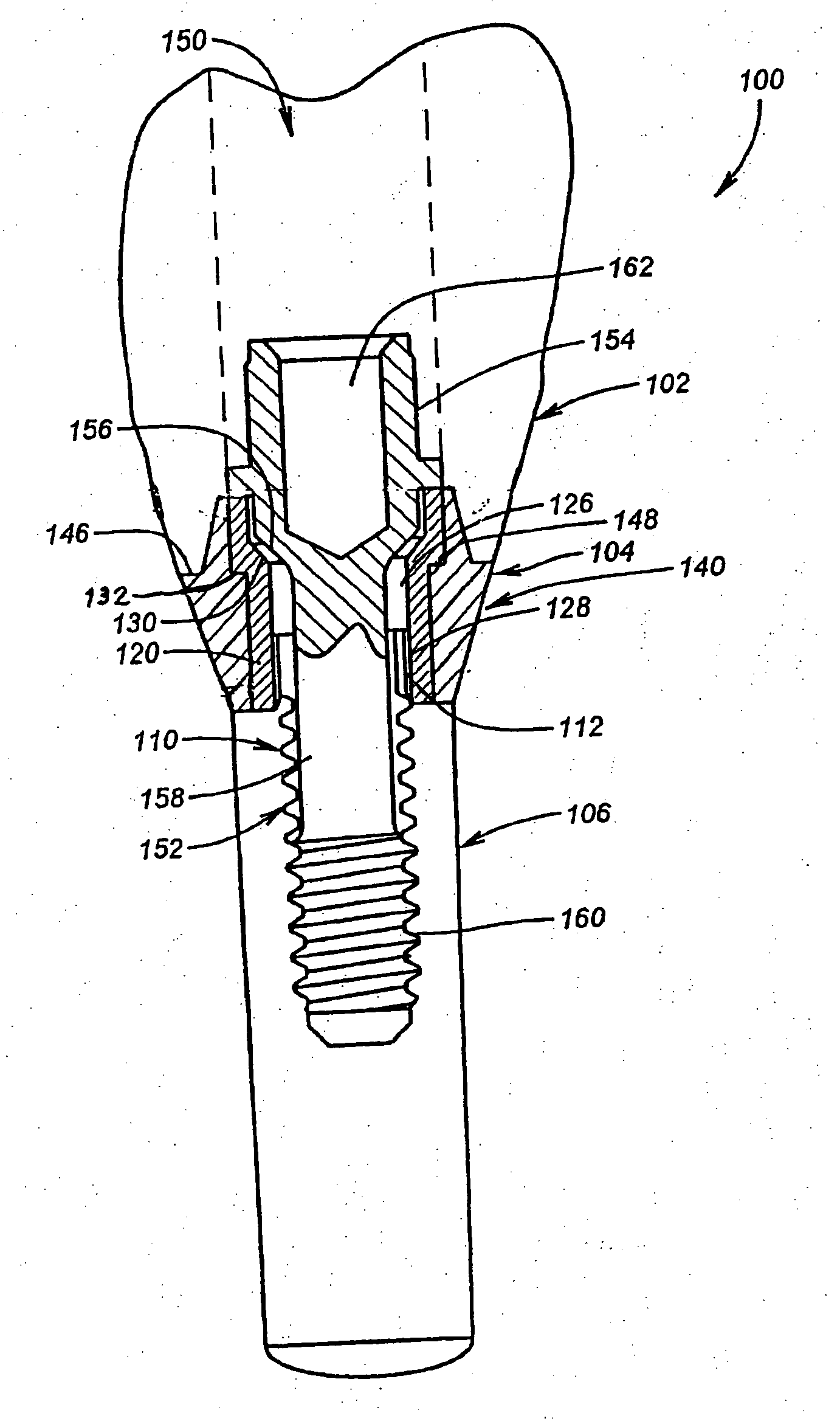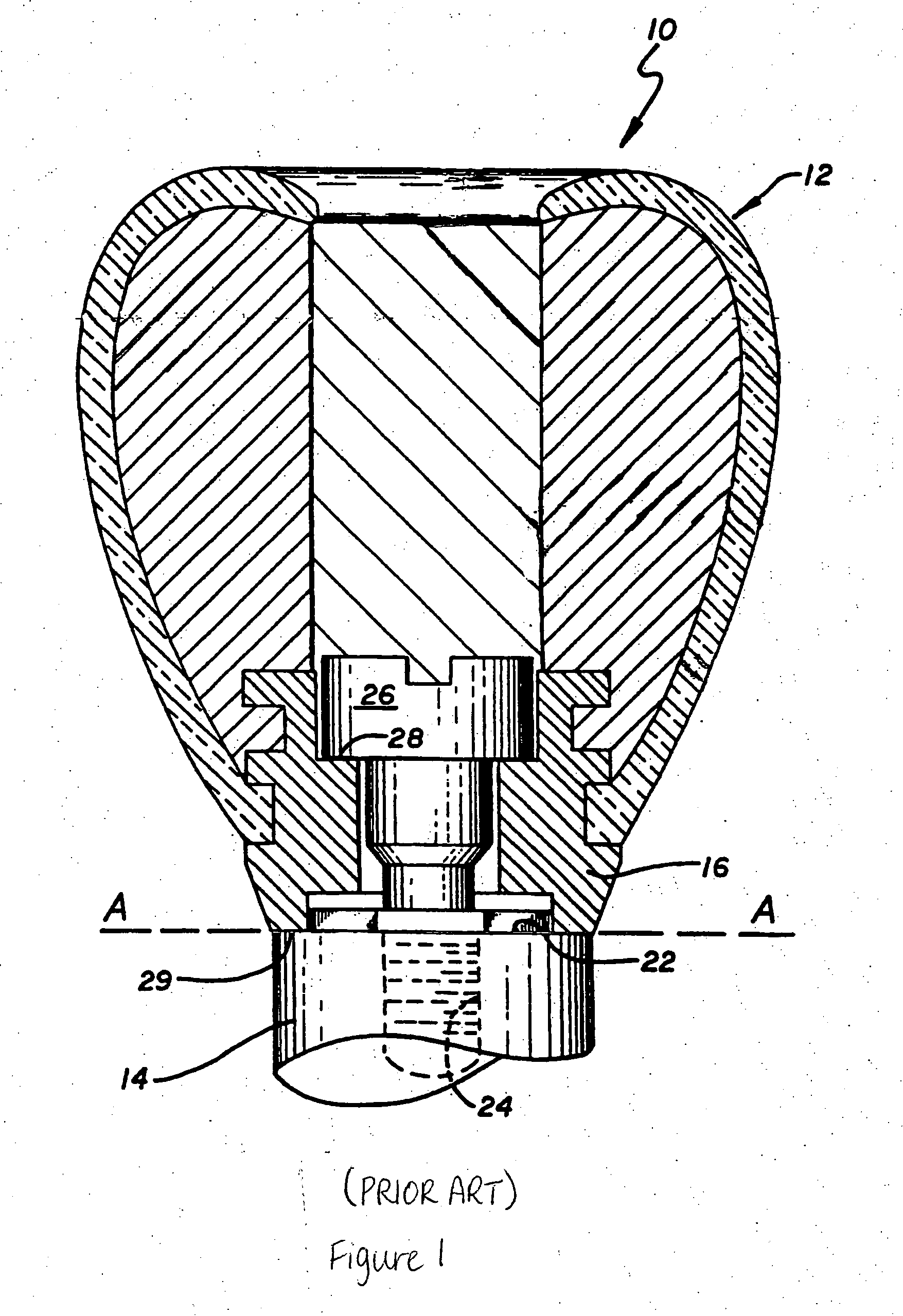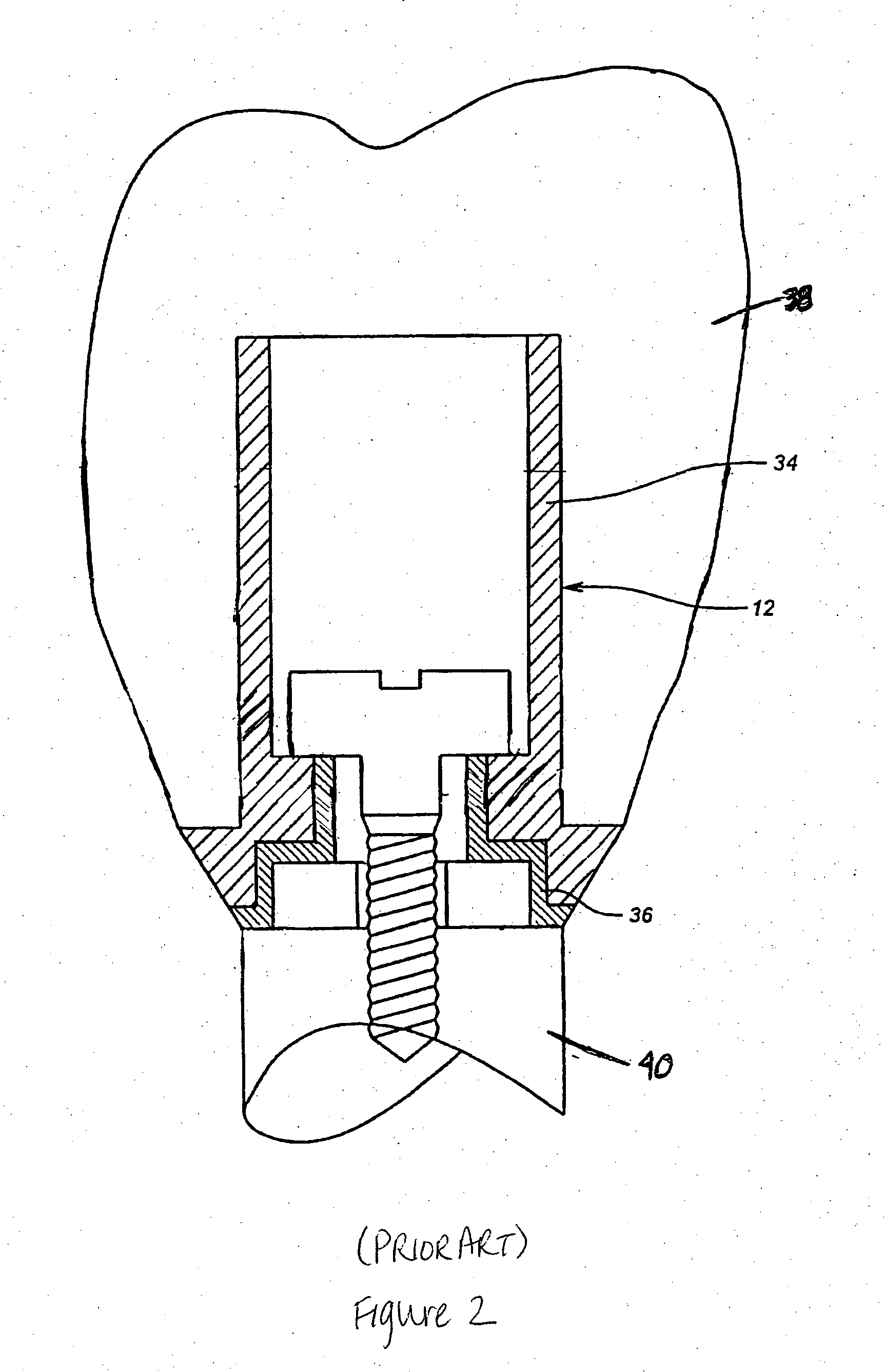Abutment for dental implant
a technology for dental implants and abutments, which is applied in the field of restoration dentistry, can solve the problems of high stress interaction between metal implants and ceramic materials of posts, damage to implants, and unattractive prosthesis
- Summary
- Abstract
- Description
- Claims
- Application Information
AI Technical Summary
Problems solved by technology
Method used
Image
Examples
example
[0039] Adequate alveolar bone must first be present at an edentulous site in order to properly treat a patient with a dental implant. After the secure placement of the dental implant in the patient's jawbone, an appropriate abutment type is selected that will provide support for the final restoration. Where the final restoration being considered is an all-ceramic restoration, selection of an implant abutment according to the present invention, that is color-shaded similar to natural teeth is suggested, as opposed to a metallic abutment which may shadow through the ceramic prosthesis and affect the color of the all-ceramic restoration. An impression and shade is taken using one of the known shade guide systems and sent to the laboratory for fabrication of the final restoration. The color of the abutment is matched to the chosen color for the restoration. The final restoration is then fit within the patient's mouth and permanently mounted.
PUM
 Login to View More
Login to View More Abstract
Description
Claims
Application Information
 Login to View More
Login to View More - R&D
- Intellectual Property
- Life Sciences
- Materials
- Tech Scout
- Unparalleled Data Quality
- Higher Quality Content
- 60% Fewer Hallucinations
Browse by: Latest US Patents, China's latest patents, Technical Efficacy Thesaurus, Application Domain, Technology Topic, Popular Technical Reports.
© 2025 PatSnap. All rights reserved.Legal|Privacy policy|Modern Slavery Act Transparency Statement|Sitemap|About US| Contact US: help@patsnap.com



